About Spencer Station
✨ Discover Spencer, Missouri
A true historic gem along Missouri's Route 66
🚗 The Road to Spencer
West of Paris Springs Junction, old Route 66 takes a gentle jog south across State Road 96 onto County Road N. This stretch of concrete pavement leads travelers through time—first crossing a 1923 triple pony-truss bridge over Turnback Creek, then winding toward a 1923 one-lane steel truss bridge over Johnson Creek.
These bridges mark the gateway to Spencer, Missouri—a tiny settlement with a mighty story.
🕰️ A Mill, A Store, A Town
Spencer’s roots reach back to the 1860s, when Oliver Johnson built a flour mill along the creek that would bear his name. Travelers along the old Carthage-Springfield Road (known as Missouri 14) often stopped near Johnson’s Mill, and the area soon became a popular resting place.
In 1868, a man named Mr. Spencer opened a store at the site, and with it came a post office. The settlement was officially named Spencer.
By the 1880s, the town had grown to include:
A second general store
A schoolhouse
Methodist and Christian churches
A grocery store
A blacksmith shop
The original flour mill, operated by Johnson and John Cherry, was known as the Johnson-Cherry Mill. After its closure, Johnson built a new mill one mile downstream—Johnson’s Mill—cementing the area’s role as a hub for local agriculture and trade.
🗺️ A Place Lost to Time
An 1870s map of Lawrence County shows Spencer southeast of Heaton (now Heatonville), near the western Turnback Creek. That location differs from today’s Spencer—but the spirit remains.
Despite its early promise, Spencer’s prosperity was short-lived. The post office closed in 1907, and by 1912, the road to Spencer had become impassable. With traffic gone, businesses shuttered, families moved on, and Spencer quietly faded into history.
🌟 Why Spencer Still Matters
Though it once became a deserted town, Spencer’s legacy lives on—especially for those who cherish the romance of Route 66. Its untouched bridge, vintage buildings, and quiet charm offer a rare glimpse into America’s past.
Whether you're a history lover, a road tripper, or a nostalgic soul, Spencer Station welcomes you to walk on its historic roadbed and imagine the lives that once lived here.
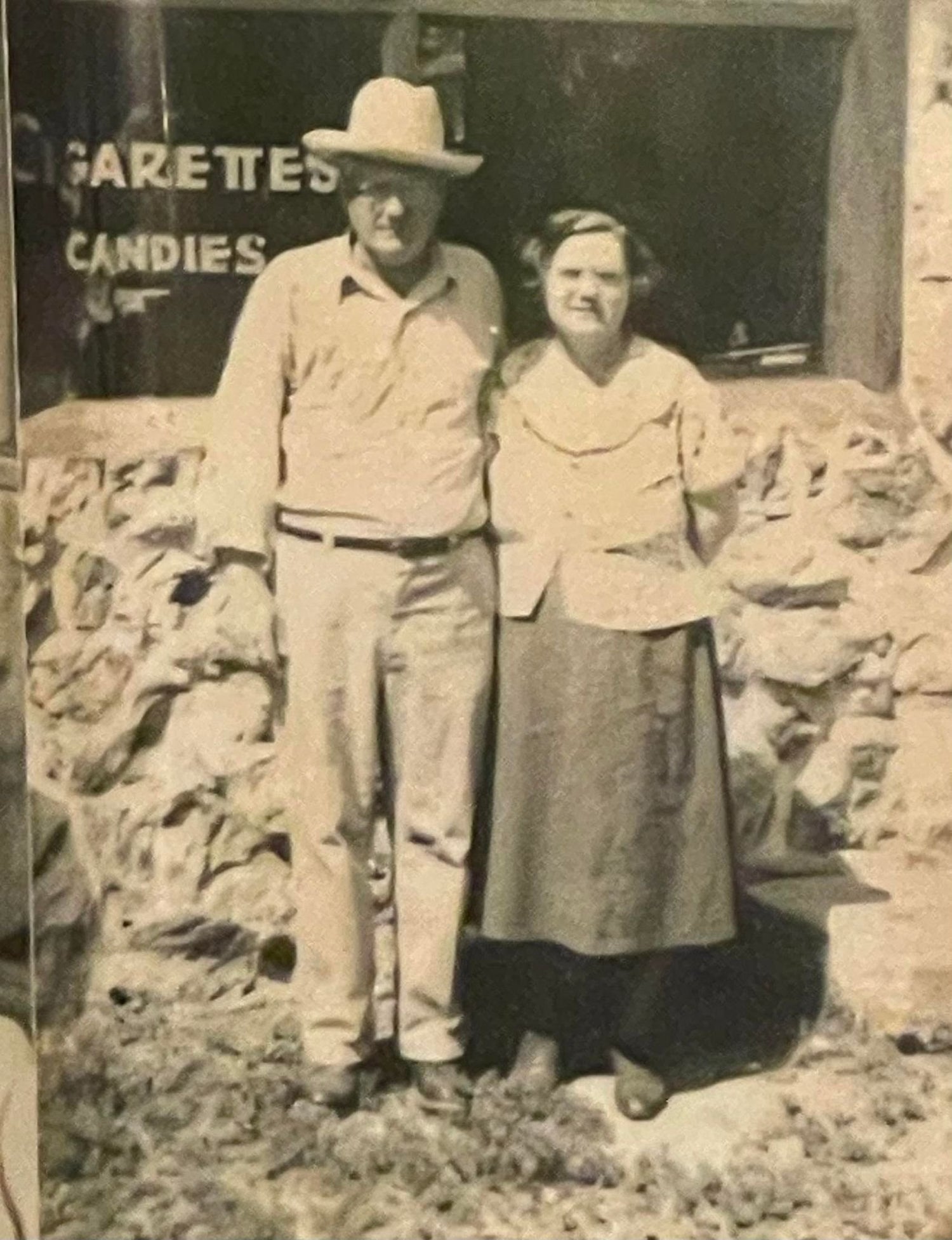
The Revival of Spencer
How one family brought a ghost town back to life
👣 A Journey Begins – July 1925
More than a decade after Spencer had faded into quiet obscurity, a man named Sidney Casey heard whispers of an old store building for sale—and a brand new US highway passing through its front door. At the time, Sidney and his young family were running a small store along the White River near Shell Knob.
Intrigued, and without a car, Sidney set out on foot in the heat of July 1925 to see the place for himself. A 55 mile journey which would change Spencer's history.
🏚️ A Forgotten Store, And A New Beginning
What he found was a weathered wooden building near Johnson Creek in northeastern Lawrence County. Once a grocery store and post office, it now stood empty—waiting for a second chance.
Sidney tracked down the owner, Frank Johnson, and put down a $50 deposit. He paid the remaining $450 in installments for the store and two acres of land. Soon after, Sidney, his wife Mary, and their three sons—Carl, Albert, and Johnnie—moved in and reopened the store. Their fourth son, Bobbie, would be born later.
For a time, they were the only residents of Spencer.
🏗️ Building for the Future
Construction had just begun on a new highway that would link the Midwest to the West Coast. That road—Route 66—would pass directly in front of the Caseys’ store.
Sensing opportunity, Sidney began to build:
1926 – A new store building rose beside the original 1860 store.
1927 – A garage and service station were added, selling Tydol gasoline
1928 – The property expanded into a row of buildings that served as a café and barbershop
By August 1938, Casey’s station had become a distributor for the Phillips 66 brand.
🛍️ Route 66’s First “Strip Mall”
Today, locals and travelers love to call it "Route 66's first strip mall”. Spencer Station wasn’t just a stop; it was a destination.
Built because of—and for—Route 66, Spencer Station became a symbol of resilience, entrepreneurship, and the American road trip dream.
(Photo: Sidney and Mary Casey, circa 1940s)
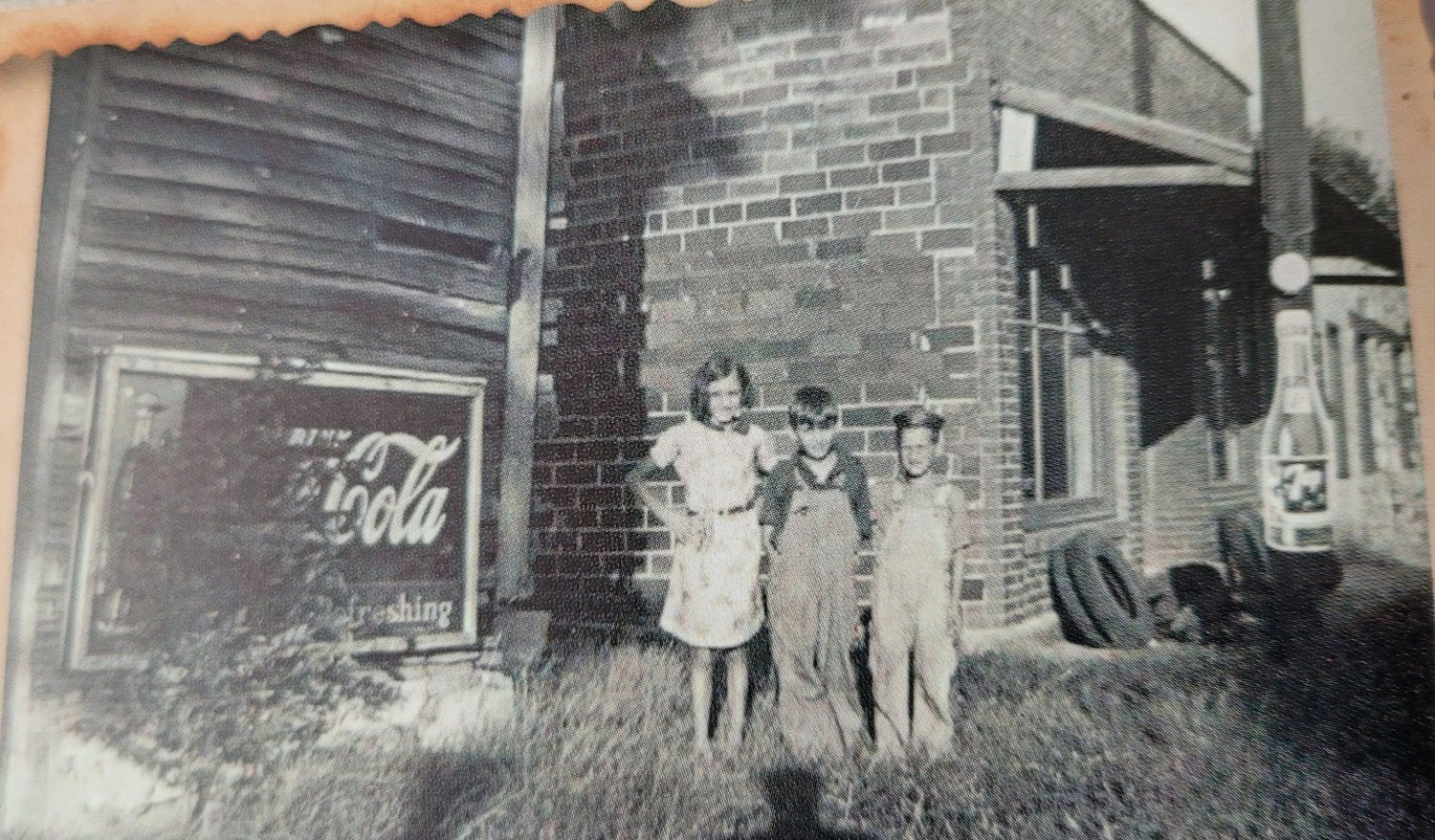
🏘️ Life at Spencer Station
Where the road met the heart of a community
👨👩👦 The Casey Family Legacy
After Sidney Casey built the buildings currently standing at Spencer Station in the late 1920s, the Casey family became its beating heart. They ran both the general store and the service station/garage, while the middle building—home to a café and barbershop—were leased out and ran until around 1948.
Together, these buildings formed more than a roadside stop—they became a lifeline for locals and travelers alike.
🛣️ A Stopover with Soul
Spencer quickly grew into a community center and a beloved stop along Route 66.
It wasn’t just a place to refuel—it was a place to connect.
The store doubled as a post office and a Greyhound Bus stop
Dances lit up the platform across the road
Neighborhood news was shared from the bench out front.
Inside the garage, an old wood-burning stove kept card players warm on chilly nights
These simple moments made Spencer feel like home to anyone passing through.
🖼️ A Glimpse into the Past
(Photo: The original 1860 wooden general store stands to the left. Bobbie Casey, the youngest of Sidney and Mary’s sons, is pictured on the right—early 1940s.)
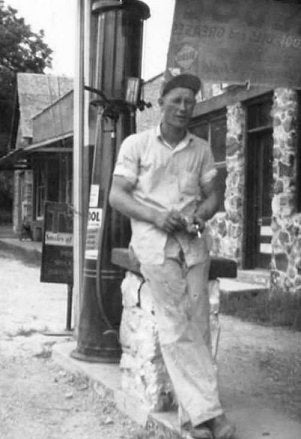
🌄 Spencer Station: A Roadside Legacy
From fading footsteps to bringing a town back to life.
🚧 The Bypass Era Begins
In 1961, the realignment of old U.S. Route 66 marked a turning point for Spencer. Highway 96 just was built to the north, bypassing both Spencer and nearby Paris Springs Junction. With fewer travelers passing through, Sidney Casey began selling off merchandise and secondhand goods. Eventually, the store and gas station closed their doors at the end of 1961.
This was only the beginning of its decline. A few years later, both alignments of Route 66 in southwest Missouri were bypassed by the newly constructed I-44—leaving many small towns, including Spencer, in quiet decline.
🕯️ The Casey Legacy Continues
Sidney Casey passed away in May 1963, leaving the buildings and property to his wife Mary and their sons. In 1985, Carl Casey and his wife Ruby purchased the property from Mary and Carl’s brothers, settling into the family home behind the store buildings.
(Photo: Carl Casey, circa 1946)
After Carl’s passing in 2006, the property was inherited by his son Kent Casey—marking the third generation of Casey ownership. But by then, the buildings stood silent, weathered by time.
🛠️ A New Chapter: The Ryan's Restoration
In May 2008, Francis and Mary Lynn Ryan of Salina, Kansas purchased the property. Their mission was simple but heartfelt: “Save the buildings.”
They poured love and labor into the site:
- Installed new roofs on three of the four buildings
- Re-roofed the original 1926 two-story farmhouse
- Reinforced the east wall of the garage
- Rebuilt the canopy and pump island at the gas station
- Restored the front canopy at the General Store
- Decorated the buildings with personal memorabilia and vintage gas pumps—now photographed by visitors from around the world
🔧 Preservation in Progress: Ed & Stephanie Klein
In June 2022, Ed Klein of Route 66 World acquired Spencer from the Ryans, determined to continue its restoration and open it to the public — mostly on the weekends.
Now entering his 18th year of Route 66 preservation work, Ed and his “much, much better half” Stephanie dedicate their free time to:
- Restoring, repairing, and rebuilding the property
- Recreating the look and feel of Spencer in the 1930s and 1940s
- Curating period-correct items that bring the past to life
If the “COME ON IN” sign is out front, it means they’re there—ready to welcome you and share the progress.
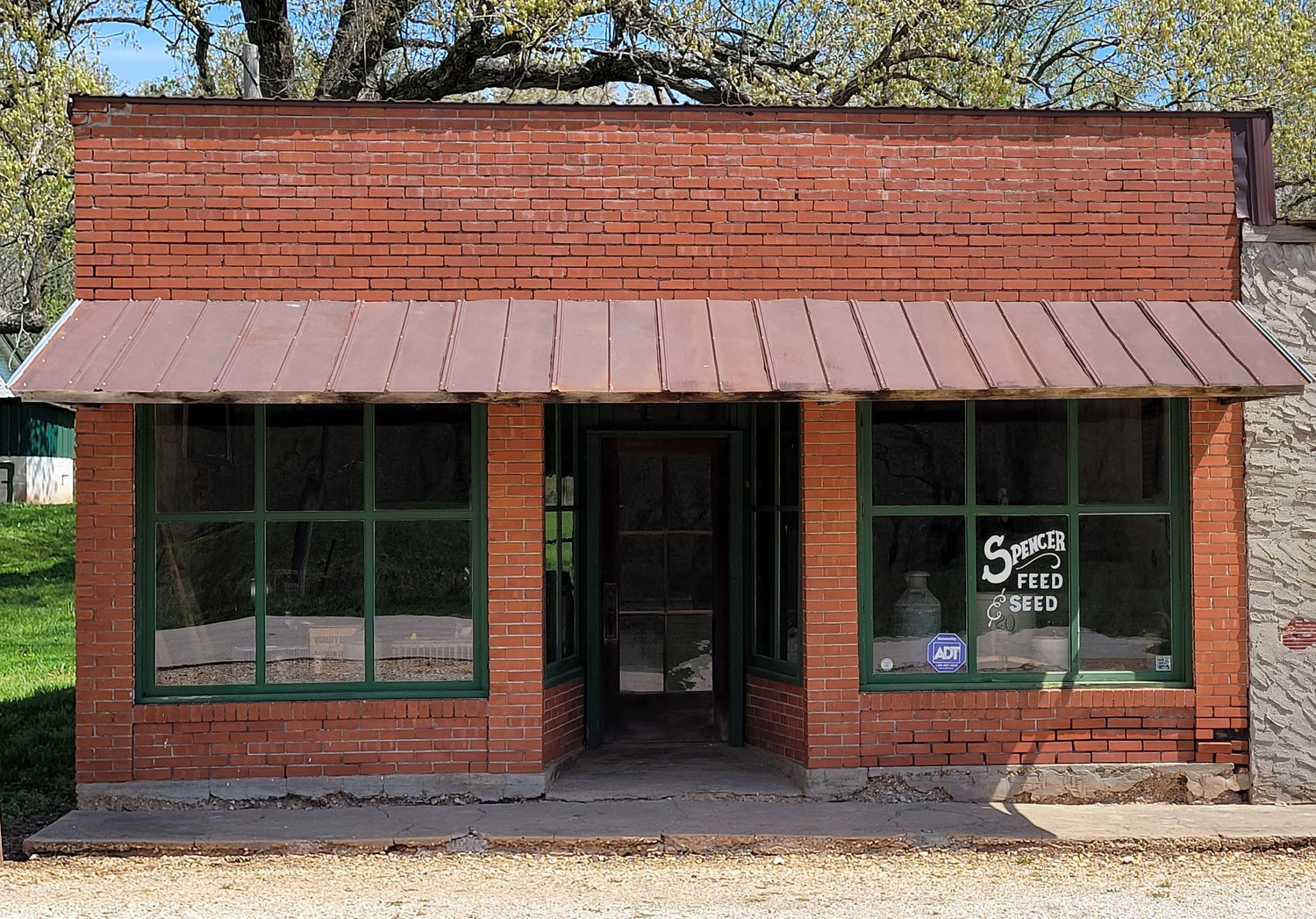
Spencer General Store
🧱 The 1926 General Store
Built to last, ready to return
🏗️ A Brick-by-Brick Legacy
On the western edge of Spencer Station stands a building built in 1926—built with two distinct types of red brick, a rectangular footprint, and a flat roof. This sturdy structure replaced the original wooden general store built in 1860, which once stood just west of this one.
Sidney Casey, ever the visionary, constructed the new store to serve the growing number of travelers and locals drawn to Spencer. The old wooden store was eventually demolished in the late 1940s, but the brick building remained—a quiet witness to the changing tides of Route 66.
🛒 A Store That Served Generations
For decades, this general store was the heart of Spencer. Sidney Casey ran it with pride, offering goods and conversation to anyone who passed through. It served its final customer in 1961, when the realignment of Route 66 diverted traffic away from the town.
But now, after years of silence, it’s ready to welcome visitors once again.
🏛️ A Museum in the Making
Plans are underway to restore the 1926 General Store to its 1930s glory:
- Period shelving and display cases will recreate the look and feel of a Depression-era mercantile, turning this into a period correct museum.
- A dedicated section will serve as Spencer Station’s gift shop, offering souvenirs and keepsakes that support ongoing restoration efforts
This isn’t just a renovation—it’s a revival. A chance to step into the past and experience the charm of a true Route 66 general store.
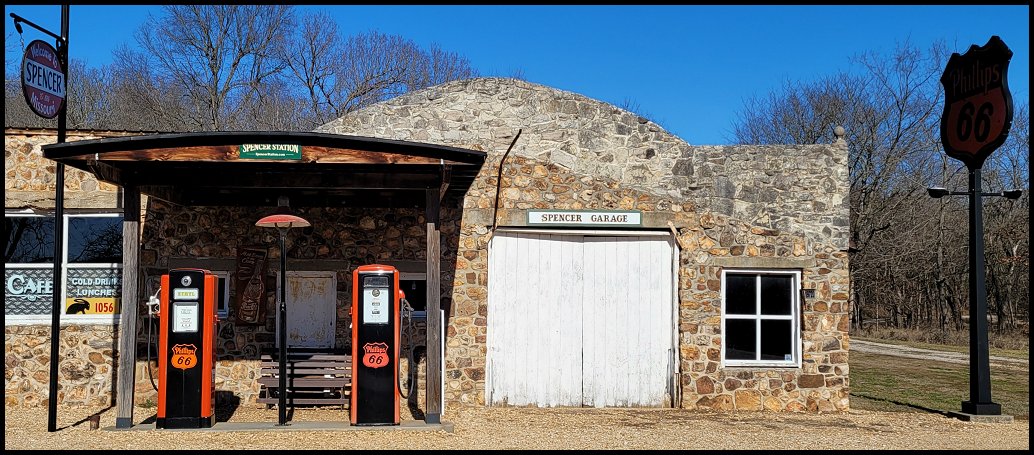
Spencer Garage & Service Station
⛽ The 1927 Service Station
Stone by stone, built to serve Route 66
🧱 A Landmark of Sandstone and Style
On the eastern side of Spencer Station stands its largest and most distinctive building—constructed in 1927 from rugged local sandstone rubble. Its rounded parapet and two-tone stonework give it a character all its own, echoing the craftsmanship of a bygone era.
Originally built as a service station and garage, this structure was designed to meet the growing needs of travelers along the newly forming Route 66.
🏗️ Raising the Roof—Literally
The original roofline, though charming, wasn’t steep enough to shed rain and melting snow. So in the 1930s, Sidney Casey made a bold decision: he would “raise the roof.”
Using river stone, Sidney built up the front and rear walls to conceal the new, steeper roof pitch—preserving the building’s aesthetic while improving its durability.
⛽ From Tydol to Phillips 66
The station first operated under the Tydol brand, serving fuel to countless travelers. By 1938, it had transitioned to Phillips 66—becoming part of one of America’s most iconic fuel brands.
Today, the station features:
Restored vintage Phillips 66 gas pumps
A classic orange Phillips 66 sign
A lovingly recreated pump island and canopy
A restored Phillips 66 'oiler'
📸 A Favorite Photo Spot
If you follow our Facebook page, you’ll notice a trend: nearly every visitor photo is taken right here—on the pump island in front of the service station. It’s a place where history meets nostalgia, and where the spirit of Route 66 still lingers in the air.
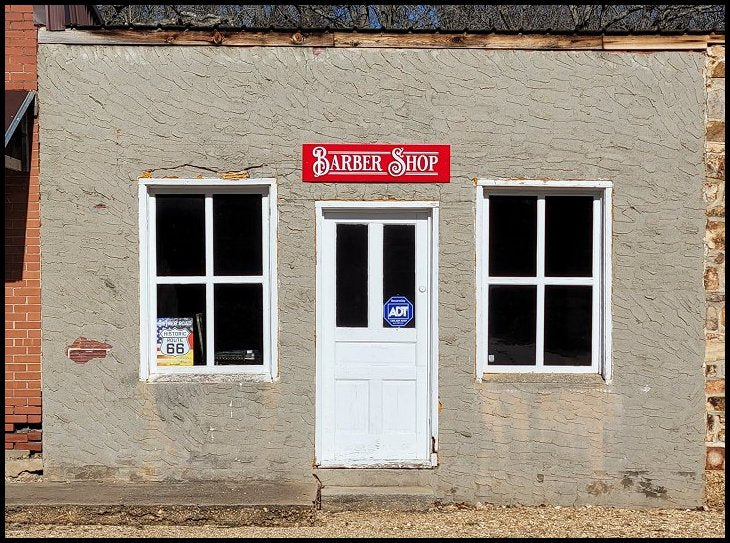
Spencer Barber Shop
💈 The 1928 Barber Shop & Diner
A slice of Americana between two buildings
🧱 Bridging the Station
As Sidney Casey expanded Spencer in the late 1920s, he saw an opportunity to unify the two existing buildings. During the construction of the garage and service station, he decided to connect the two main buildings—the general store on the west and the service station on the east.
By mid-1928, a new addition stood proudly between them.
🍽️ A Place to Eat and Groom
This central structure housed two essential services for travelers and locals:
A diner, offering warm meals and friendly conversation
A barber shop, with stucco walls over red brick—a unique architectural touch that still stands today
Though the Casey family operated the store and station, the barber shop was ran by a well-known barber: Arthur Martin, who gave trims and shaves to locals and Route 66 travelers.
🏛️ A Museum in the Making
Today, this section is being lovingly restored as a dedicated barber shop museum, featuring:
Authentic tools and memorabilia from the mid-1880s to the late 1940s
Period-correct furnishings and decor
Items which would have been found in barbershops back in the day.
It’s more than a museum—it’s a tribute to the everyday people who made Spencer a true community hub.
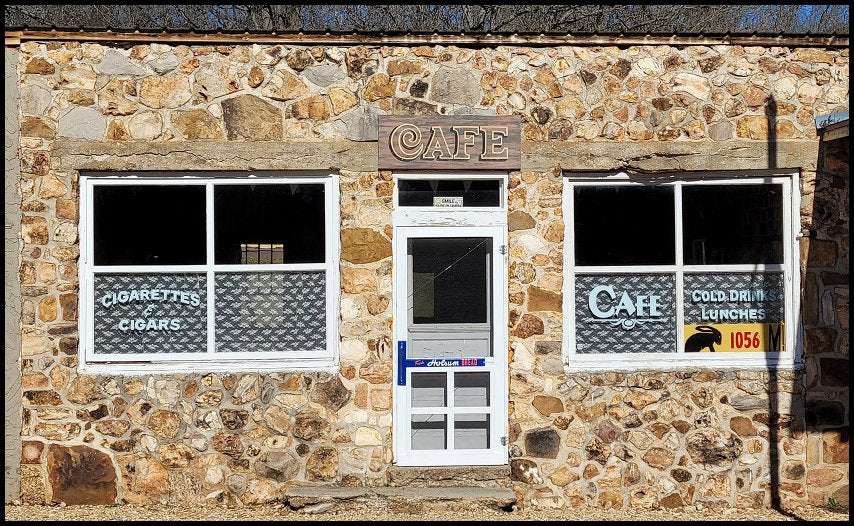
Spencer Cafe / Diner
🍽️ The 1928 Diner
Where meals and memories were served
🥧 A Warm Meal on Route 66
When this section of Spencer first opened in 1928, it welcomed travelers and locals with the comforting aroma of home-cooked meals. Though the building itself had no running water, the food was lovingly prepared in a 1940s house located directly behind the storefronts.
Each dish was carried down to the diner—hand-delivered from the kitchen to the counter from a house that is long gone.
🛍️ Overflow and Adaptation
By the 1950s and early 1960s, as the general store grew busier, Sidney Casey repurposed both the diner space and the barbershop to hold overflow merchandise. Shelves filled with goods replaced tables and stools, and the aroma of coffee gave way to the scent of dry goods and hardware.
Even in transition, the building remained a vital part of Spencer’s rhythm.
🏛️ A Café Revival
Now, plans are in motion to restore this space to its original charm—a 1930s/1940s-style café and diner. Visitors will soon be able to:
Step into a period-authentic setting
See vintage furnishings and décor
Experience the warmth and simplicity of a roadside eatery from Route 66’s golden age
It’s not just a restoration—it’s a resurrection of Spencer Station’s welcoming spirit.

